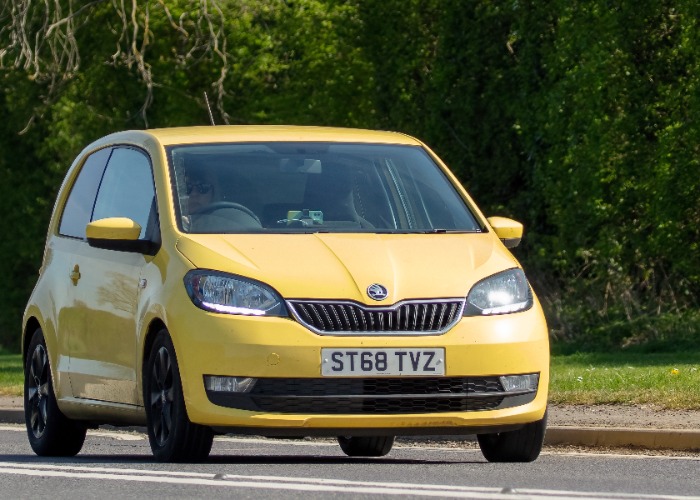Car insurance: cheapest cars to insure for young drivers

Choosing the right motor can help you keep your insurance costs to an affordable level.
Being a young driver is incredibly expensive.
The age and experience of the person behind the wheel is a big factor in what goes into pricing up a car insurance policy.
Essentially, drivers who are younger and less experienced are more likely to get into an accident, and as such insurers want to match that higher level of risk through increased premiums.
However, the cost will vary not just based on age but also on the car being covered, as a new study from GoCompare reveals.
The cheapest cars to insure
According to GoCompare, the average price of a fully-comprehensive policy for those aged 17 to 21 and buying their first year’s cover between August 2021 and July 2022 came to £1,430.
While that’s a drop of £42 from the previous 12-month period, it is nonetheless a massive outlay.
Your choice of vehicle will make a huge difference to the cost of your car insurance ‒ certain vehicles attract much higher premiums.
So which are the more budget-friendly options for new drivers?
Here are the top 10, according to GoCompare:
|
Model |
Average cost of car insurance policy |
|
Skoda Citigo |
£908 |
|
VW Up! |
£930 |
|
Seat Mii |
£960 |
|
Suzuki Celerio |
£961 |
|
Hyundai i10 |
£971 |
|
Fiat Panda |
£983 |
|
Citroen C1 |
£984 |
|
Peugeot 108 |
£996 |
|
Peugeot 107 |
£1,004 |
|
Ford Ka |
£1,016 |
There are a few things that jump out here, for me.
The first is that I’m delighted the Ford Ka is still such great value for money on insurance, given it was my first car.
More to the point though, the three cheapest motors are all from the Volkswagen group ‒ in fact the top two cars are essentially identical, from a mechanical point of view.
All of these cars are fairly frills-free ‒ you aren’t paying any extra for features you don’t really need, which is important for new drivers to bear in mind.
You’re going to be paying a lot for your cover anyway, you might as well keep it as low as possible by opting for a car that delivers what you actually need rather than unnecessary additions that will simply cost you more in the long run.
Keeping your car insurance costs low
Picking the right motor is one way to keep your car insurance costs to a manageable level, but there are plenty of other steps worth considering.
For example, taking a Pass Plus course can be a worthwhile investment. It’s a course open to those who have already passed their test, but covers areas like driving at night, on rural roads, motorways and in all weathers.
The idea is that it helps you polish up your skills, but can also have the effect of lowering your car insurance premium since it suggests that you will be a better, more responsible driver.
Improving your car’s security is also worth considering. The more secure a car is, the less likely it is to be stolen.
As a result, having somewhere to park it off the road, or even adding a steering wheel lock, can help lower your premiums.
Finally, it’s also useful to consider the type of insurance you want to go for. Recent years have seen a host of innovations come through when it comes to different types of car insurance, and they can pay dividends.
For example, increasing numbers of insurers now offer ‘black box’ car insurance deals, where your driving is monitored in real-time.
It measures things like your braking and typical speeds, meaning the insurer can offer a more bespoke policy based on you as an individual driver.
Alternatively, there are now insurance policies which allow you to pay by the mile, ensuring that you only pay for the cover you actually need and use, rather than having to cough up extra.
Don’t go fronting
It’s worth highlighting a really serious mistake that some families make when it comes to insuring a car for a young driver.
Adding other named drivers to a car insurance policy is absolutely fine, and in fact can be a smart way to lower costs, so long as it is clear who the main driver is.
However, according to research from GoCompare, around one in five parents with children who have a car have admitted putting the insurance in their own name, with the child only named as an additional driver.
This could potentially be ‘fronting’, where the more experienced driver is cited as the main user incorrectly, in order to lower the insurance costs.
This isn’t just a little white lie, either ‒ it’s insurance fraud. As a result, it could result in the policy being voided, or even worse a large fine and a criminal record.
With money tight at the moment, it’s understandable that parents will want to find ways to cut costs of insuring their child’s car.
But fronting is not a money-saver at all ‒ it could end up having enormous financial repercussions for all involved.
Comments
Be the first to comment
Do you want to comment on this article? You need to be signed in for this feature